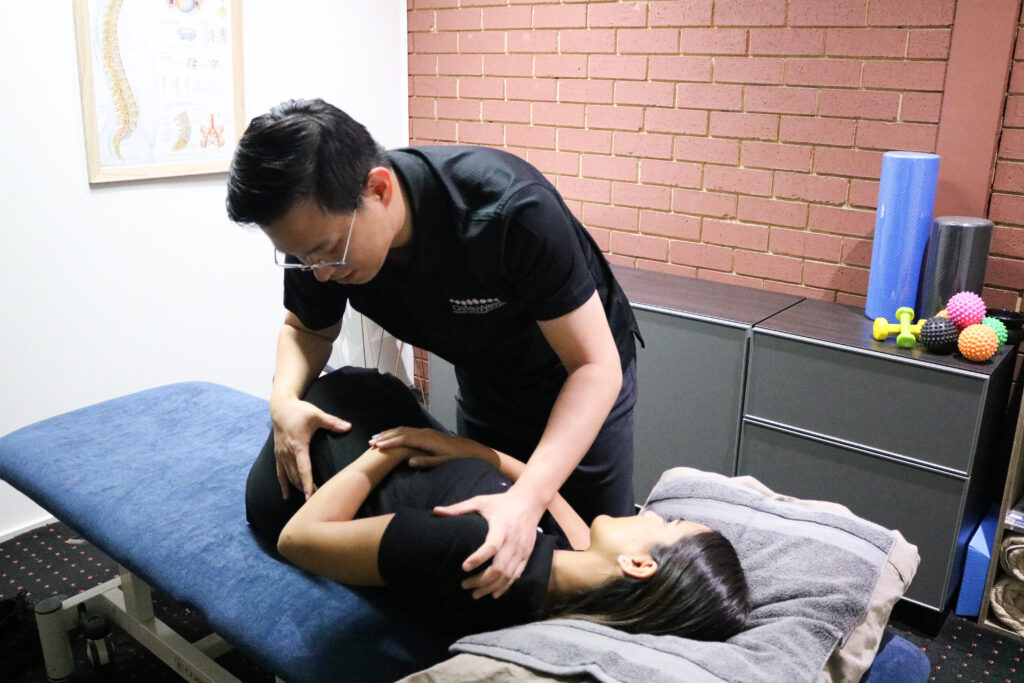Here at OsteoWest we offer a wide range of treatment options to optimise outcomes for each patient. There are considerations when choosing whether we use dry needling, cupping or manual therapy to help you. We consider your pain presentation, diagnosis and stage of recovery/rehabilitation but most importantly, we also consider your personal preference!
Note: When discussing manual therapy, we are referring to soft tissue massage, deep tissue massage, manipulations, joint articulations and muscle energy techniques.
Dry Needling Benefits
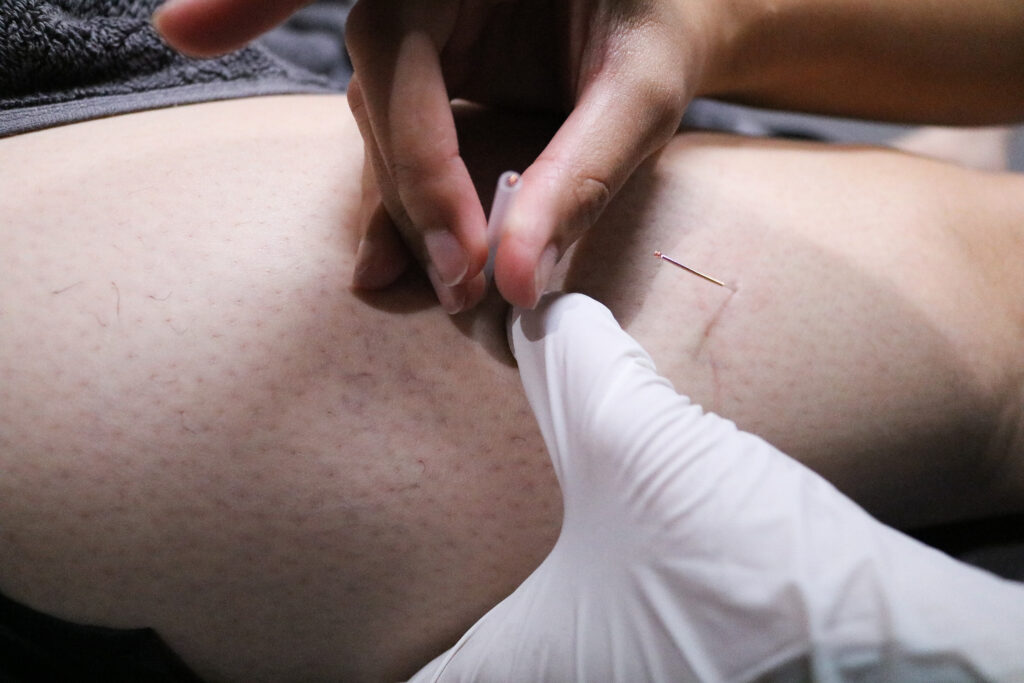
Needling is a treatment that uses fine filament needles. Tense and sore muscles often have tight spots. When a muscle develops a trigger point, nerves that supply these muscles become over-active causing tension in surrounding blood vessels, joints and soft tissues.
They are used to release these trigger points. The goal is to reduce muscle pain and spasms, therefore improving overall function.
Useful for:
- Relieving muscle knots
- Pains in tendons
- Myofascial trigger points
- Thickened tissues or scarring
Not useful for: patients with needle phobia’s or epilepsy
Caution with: Patients with bleeding disorders, on anti-coagulant medication, cancer and nickle/chrome allergies
Myofascial Cupping
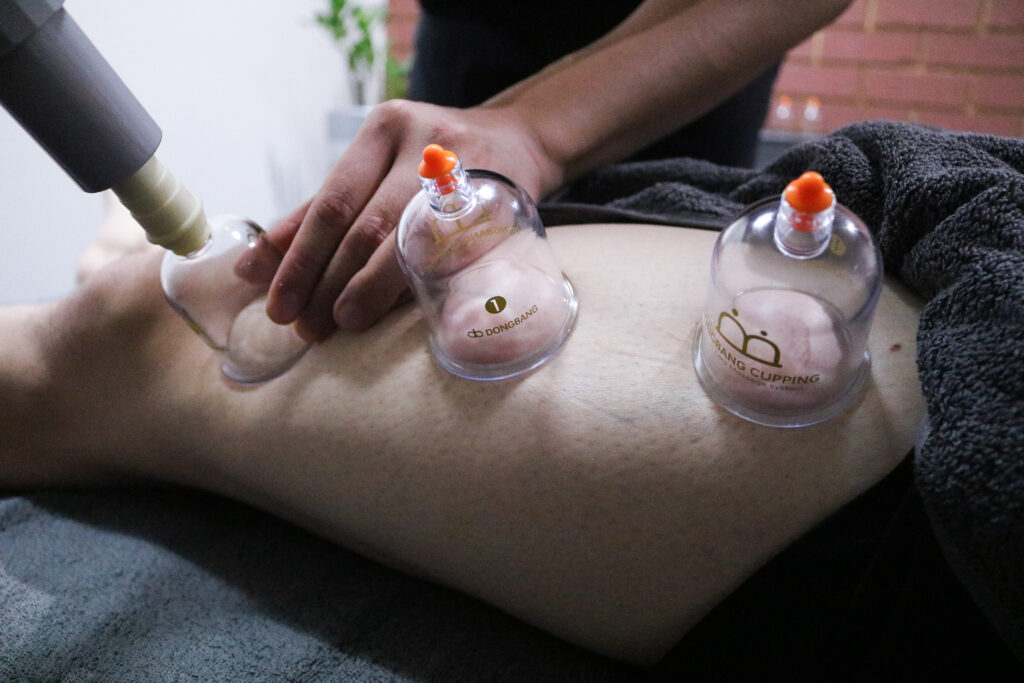
Useful for:
- Softening tight muscles
- Stimulating blood flow
- Relieve deep muscular issues and reduce muscle spasms
- Drain lymph and cellular debris
- Separate layers of connective tissue
Not useful for: Fractures, acute sprains, areas of oedema (swelling), pregnancy (certain areas), patients with bleeding disorders, high fevers or with recent trauma
Manual Therapy
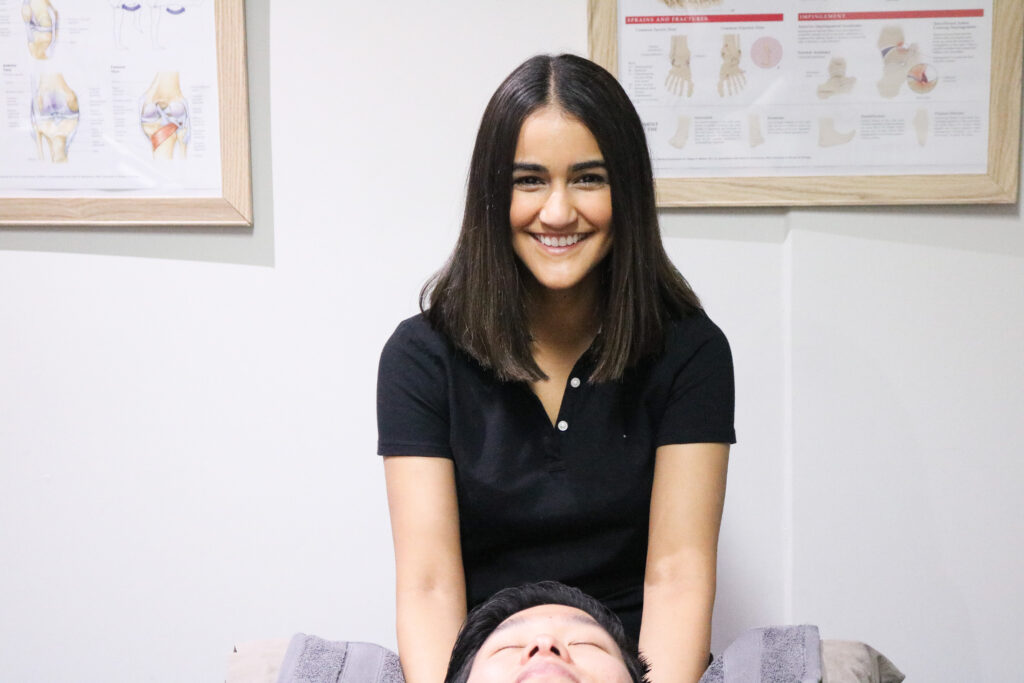
Useful for: Outcomes in the short to medium term to reduce muscle tension, muscle knots, pain in tendons, increase joint range of motion and decrease pain.
Not useful for:
- Based on clinical evidence on the recovery process of injuries, manual therapy is not useful for long term outcomes. Instead, there often needs to be some element of strength and conditioning in addition.
If you have any questions or would like to try dry needling or cupping in, conjunction with your manual therapy, please let us know at your next consult!
